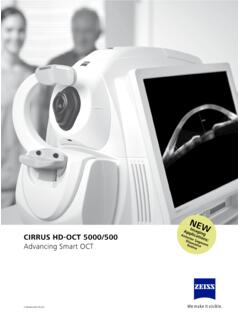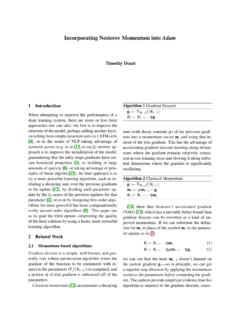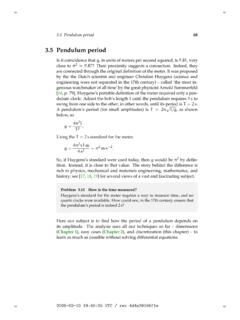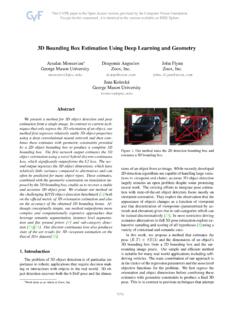Transcription of Exporting Images and Movies in ZEN Blue - ZEISS
1 Exporting Images and Movies in ZEN BlueFirst Steps in ZEN BlueSkill Builder Series: Image ProcessingExporting Images and Movies in ZEN BlueThe ZEISS ZEN Blue software has an expanded set of tools for adjusting, annotating, and performing mea-surements on Images but how can these tweaks be finalized into formats ready for collaborative use? The following guide details the steps required for Exporting image sets and standalone Movies , all while providing starting point recommendations for the parameters of Image ExportExporting an image or Images from a single .CZI file input is possible regardless of the dimensions involved ( multichannel, Z-stack, time series, multiple positions). However, all of these options first require that the image file is first open within ZEN.
2 Once the image is active, the Image Export tool can be easily accessed via the menu item File Export/Import Export, or via the CTRL+6 keyboard shortcut. Both options will take the user to the Processing tab there, expand the Input window at the bottom. This con-trols which image in the workspace will be used for Exporting . If the Set Input Automatically checkbox is ticked, the currently-dis-played image will be the Input window is the main Parameters window. This win-dow contains all options for controlling the output of the image export process. Make sure the Show All toggle in the upper right is active to reveal expanded details, if needed. These full options in-clude: 1. File type determines the output format; options include JPEG, TIFF, BigTiff, PNG, and more2.
3 Quality/Compression permits reduction of the exported file size; options visible will differ depending on file type3. Resize changes the final image dimensions (pixel count) by the given percentage valueExporting Images and Movies in ZEN Blue4. Original Data only the raw data will be exported with no pseudocoloring, display adjustments, or graphic overlays applied a. Shift Pixel converts image pixels to 16-bits before further downsampling 5. Apply Display Settings and Channel Color exports the image with pseudocolor and display adjustments ap-plied as seen on the screen; this is the default setting a. Burn-In Graphics scale bars, time stamps, or other annotations will be kept on the exported image; the zoom of these elements can also be adjusted b.
4 Merged Channel Images exports a merge of all existing channels c. Individual Channel Images exports each channel as a separate image; independent of the Merged Chan-nel option above6. Use Channel Names uses any existing channel names from ZEN and applies it in the resulting exported image file name The Use Full Set of dimensions option will perform the Exporting functions on all multidimensional aspects of the image set. This means that, for example, a multichannel Z-stack will yield individual Images at each Z plane within the original alternative option, Define Subset, permits extraction of more limited portions of such an image set. When selected, the fields shown here will update based on the current active image.
5 Channels, Z-Posi-tion, Time, Scenes, Region (ROI), or even Tiles can be independently restricted. This can minimize genera-tion of unnecessary bottom of the Parameters window contains a directory path for determining where files will be ex-ported. Note that the Create folder checkbox is ticked by default, which will place all resulting Images in a self-contained folder. Additional options for creating an .XML metadata file or a complete .ZIP file of all data are also available. Finally, a common prefix for all exported Images can be Images and Movies in ZEN BlueOnce the Parameters are set, the export action can be initialized with the large Apply button above the window. This process is relatively fast and proportional to the input file size, but can be monitored with a progress bar that appears at the bottom of ZEN.
6 Resulting Images can be retrieved immediately and will appear as they are generated. Movie ExportA standalone movie file can be exported from most multidimensional datasets (multichannel, Z-stack, time series, multiple positions) with con-trol over the playback sequence. To access the Movie Export toolkit, click the menu item File Export/Import Movie Export when a suitable image is active. Use the Input window to define the target image; the Set Input Automatically checkbox can speed up this step for selecting an Parameters window contains all available options for controlling the movie output. The Format and Size/Rate sections are linked, providing options for .AVI, .WMV, and .MOV and the relative video size/quality.
7 The Original Size selection will maintain the raw image pixel counts and should be considered as a starting that due to licensing restrictions, the .MOV format requires a simple installation of additional encoding files. The Windows 64-bit build should be downloaded from the link below, and the file extracted to the given directory: C:\Program Files\Carl ZEISS \ZEN 2\ZEN 2 (blue edition) Exporting Images and Movies in ZEN BlueOnce a file format is determined, additional settings include:1. Burn-in Graphics scale bars, time stamps, or any drawn annotations will appear on the ex-ported image; the relative zoom of these ele-ments can be adjusted (from 1% and up)2. Merged/Individual Channels Image one or both options can be checked; if multiple options are active, the exported movie cycles through all channel Images 3.
8 Fitting if a specific set of video pixel dimen-sions is selected (in the Size/Rate section above), this option allows control over how the result is stretched or cropped to fit the format4. Sequence the order can be determined if cycling between multiple dimensions during the final movie playback5. Mapping options include 1 Frame per Image and Fixed Duration; the latter permits manually typing a frames/sec value to control the Final Movie Length fieldThe Use Full Set of dimensions option will export a movie using all multidimensional aspects of the image set. This means that, for example, a Z-stack + time series input will potentially result in a movie that cycles through all Z planes before advancing the time pointThe Define Subset option is therefore useful to help restrict a time series output to a single focal plane (for Z-stacks) or a shorter time range when sample dynamics are most interesting.
9 The Export To field controls the destination folder for the generated movie file. The addition of a Prefix to the file name is also the Parameters window set, the movie export can be initialized with the Apply button at the top near the main Processing tab. The overall movie encoding time may vary significantly depending on the compres- sion settings
















